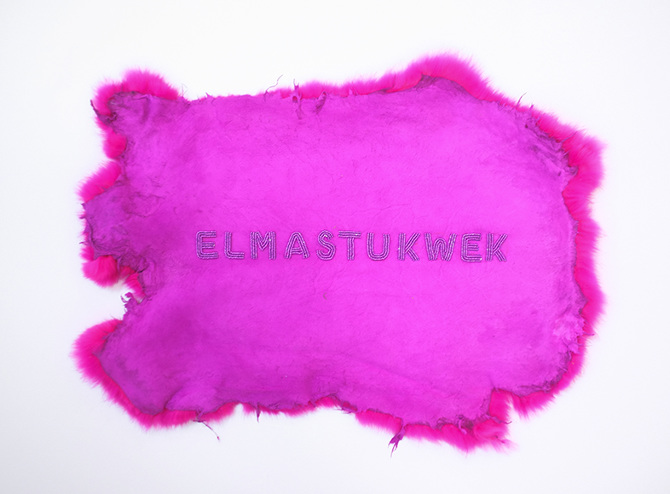
Meagan Musseau, [re]claim: ELMASTUKWEK, (Mi’kmaq place name for Bay of Islands, NL), appliqué beadwork on commercial tanned/dyed rabbit fur, January 2018, 30.5 cm x 43.2 cm.
“Landscape is pedagogy,” says Meagan Musseau, almost in passing, near the end of our telephone conversation last week. I’m in St. John’s, and she is in the community of Curling in the Bay of Islands, Newfoundland and Labrador—Elamstukwek, Ktaqmkuk territory of Mi’kma’ki. We’d discussed her practice in relation to the legality and politics around resource extraction and the harvesting of the natural world, community-based art practices, customary and craft-based practice as they relate to contemporary art, and the importance of mentorship in the development of the critical and singular vision of an emerging artist. Musseau goes to the heart of questions I’ve had myself around the ideas of artistic research and the blurring of the line between art and life. Her research is based partly in what seems to be the simple act of walking through the landscape around her home, and being receptive and responsive to what’s revealed to her. “Resource extraction of a different type,” she says.
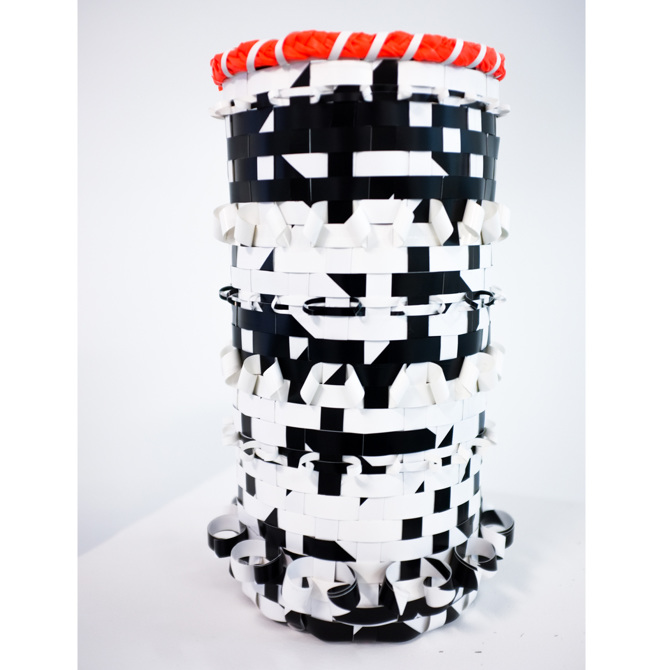
Meagan Musseau, Intergalactic L’nu Basket, split vinyl and neon orange flagging tape, January 2018, 17.8 cm x 17.8 cm x 45.7 cm.
Of Mi’kmaq and French ancestry, and originally trained as a painter at Sir Wilfred Grenfell College in Corner Brook, Musseau has developed an inter-disciplinary practice which includes new media, beadwork, basketry, land-based action and installation to explore memory, language and the relationship between land and body, object and narrative.
“Video and installation became the means by which I could disseminate my more performative work,” she explains, and I immediately think of her installation Made In Ktaqmkuk in which Musseau narrates footage of herself walking on the land—the narration consisting of oral knowledge and stories passed down to her by her grandmother and other family members. That the act of walking through landscape is a political act of reclamation holds special resonance for anyone who’s ever questioned ideas around ownership, property, home and identity.
“My response to the landscape is emotional … I observe and engage with the land and the social environment in which I live.” —Meagan Musseau
“It’s the painter in me that drew me to those colours,” she says, when I ask about Intergalactic L’nu Baskets—a series of traditional Mi’kmaq baskets wherein the customary materials of ash wood, spruce roots and sweetgrass are replaced with brightly coloured neon flagging tape “which is actually a petroleum product” she tells me. This synthesis of customary and craft practice with modern (and potentially toxic) industrial material embraces the tension between a welcome and a warning, old and ultra-new, the fleeting cultural memory and customs versus the near indestructible qualities of the tape. The effect is uncanny—the near mundane utility of the baskets transformed into beguiling objects that repulse and attract simultaneously. “I explore the formal qualities of basketry and seek to learn the language of weaving which is rooted in our ancestral territory, Mi’kma’ki,” she explains.
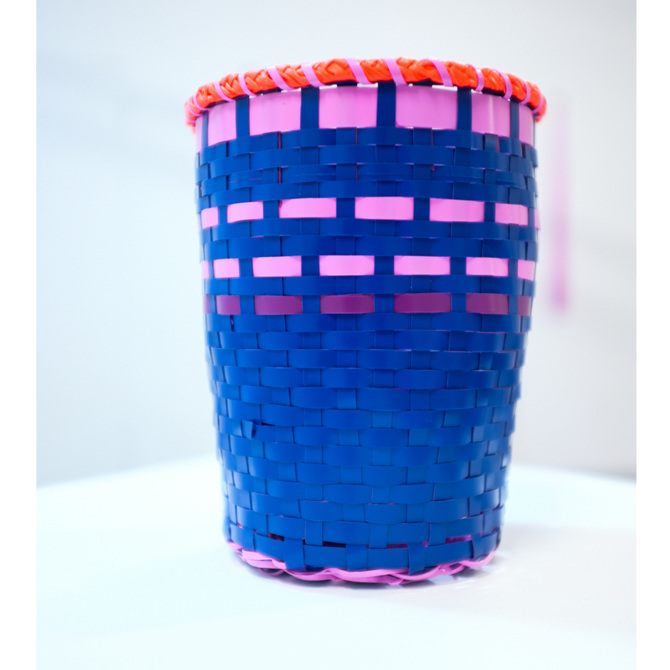
Meagan Musseau, Likpeniken (basket). Split vinyl and neon orange flagging tape, 12.7 cm x 12.7 cm x 22.9 cm, January 2018. Image courtesy of the artist
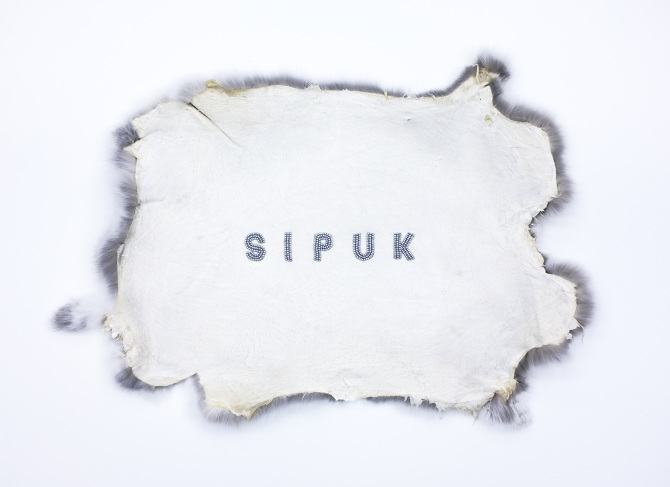
Meagan Musseau, “[re]claim: SIPUK,” (Sydney, NS), appliqué beadwork on commercial tanned/dyed rabbit fur
It all comes back to the land. “My response to the landscape is emotional,” she says. “I observe and engage with the land and the social environment in which I live.” Her installation when they poison the bogs we will still braid sweetgrass resulted from a land- based endurance performance of Musseau’s on Sacred Buffalo
Guardian Mountain in Banff, Alberta. Wearing her grandmother’s sealskin boots, Musseau braids a long length of bright orange flagging tape, which is tied to a nearby tree. The craft practice of braiding with this material is pregnant with meaning. Braiding—an act meant to beautify while strengthening a single line of fabric— is tied (pardon the pun) into the idea of familial and cultural knowledge. A practice passed from one generation to the next. What then does Musseau’s action suggest about the fate of this cultural knowledge? The orange flagging tape demarcating not only the physical landscape—here and there, ours and theirs—but as a visual representation of the passage of time itself. But as the title of the work proclaims, this cultural knowledge will not be lost, even when, finally, they’ve poisoned the entire world.
Before I hang up, Meagan stops me. “I just gotta say,” she says. “I want to talk about mentorship and community. How Jordan Bennett and Ursula Johnson gave me so much support. How important that was for me.” I say something like, “I think all art practice is community practice in a way,” and immediately know that’s a dumb thing to say but Musseau is too generous to correct me.
“And now it’s my turn to give back to the next generation of artists,” she says. It’s an important point, one that too frequently never gets made. Given the nature of Musseau’s work, one can see how acknowledging the community from which she’s gotten so much is vital to her practice itself.

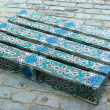

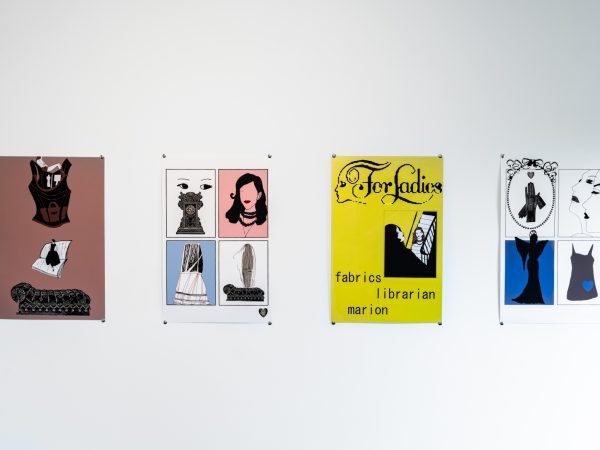
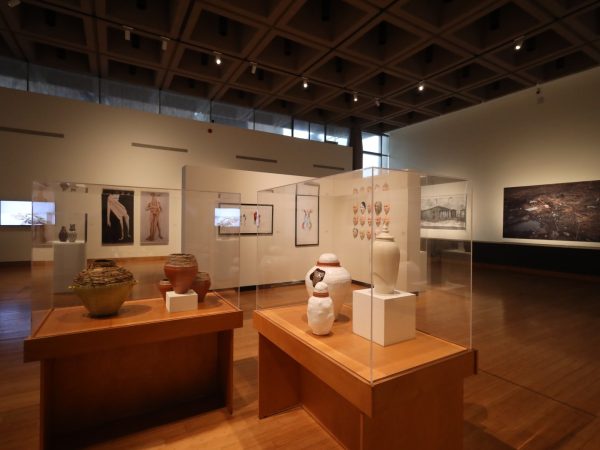











It is startling to see how much these basket resemble Gail Tremblay’s Film Strip baskets. She is also Mi’kmaq. I am hoping this is a happy and friendly overlap acknowledged by both artists because my impression is that Gail is a vastly under-recognized artist and activist who has been hard at work for decades.